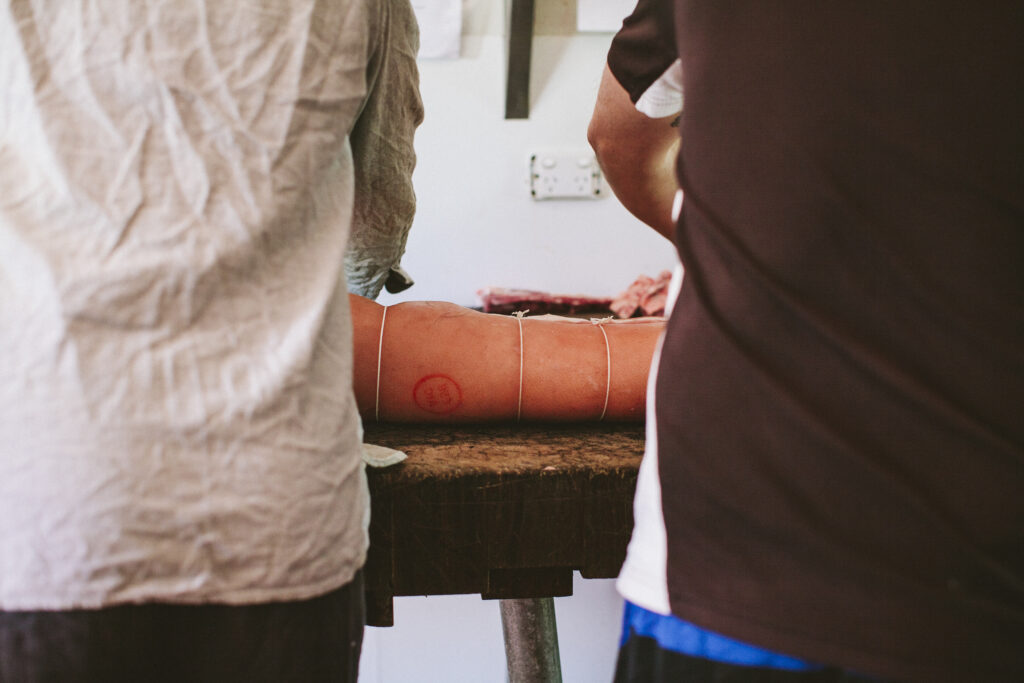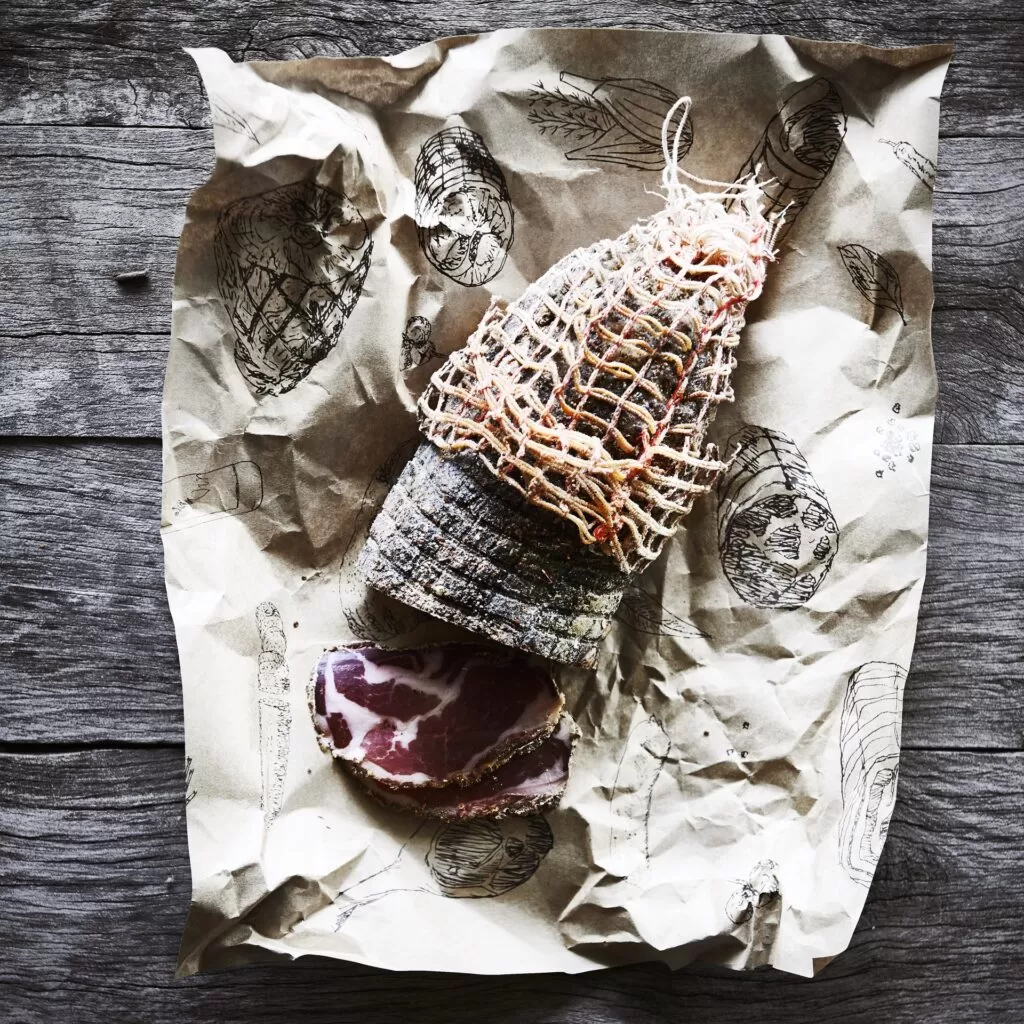
This time of the year is usually a frenzy of friends and family gathering in large groups to preserve the mighty salami pig in the garden shed, the carport or garage whichever. Thanks to COVID however, these groups are now restricted to small groups, and the frenzy has been reduced to something quite different, not half as much fun I wouldn’t think. However, if you have never tried preserving your own meat, trust me… its not that hard. I learned from books and experimenting and have literally built a business on the back of loving to butcher and cure my own homegrown meat. You can buy whole cuts form us, or try your local butcher or producer in your region, the key is good quality, pasture raised and rare breeds are even better.
You can start on a piece of pork neck, trimmed neatly. Weigh it and record the weight. Then you’ll need to weight out about 3% salt, or 30g of salt per weight of meat. We use Olsson’s flossy salt. Good sea salt is the go, murray river salt flakes won’t cut the mustard and you will end up with a half baked cure. We don’t use any cures or preservatives other than salt but you could use a premix or an instacure which all can be bought online or at butcher specialty shops, just make sure you only use the recommended amounts on the packet- these things are labelled ‘Poison’ so it’s not something to muck around with and is why we choose not to use them in our goods. They will give a more pink colour and increase the shelf life and dramatically reduce spoilage. Good practices and cleanliness are key anyway, not dodging bullets with preservatives in my opinion.

Pick some spices and mix with your measured salt and generously massage all the mix into your meat. Make sure all the surfaces are covered and the meat was well massaged, as if you were receiving a nice foot rub after running around in stilettos all day. Ahhhhh remember when we all used to wear stilettos to work??!! NOT! Ha.
Now pop your meat into a very clean and sanitised (you’re all familiar with cleanliness nowadays too thanks COVID) plastic container or even better- vacuum sealed kitchen saver bag. Label it, don’t forget about it but just leave it in your fridge for about 10 days. After this remove the meat, gently rinse the meat free of spices and pat dry with a paper towel. Weigh it and record on a little tag and attach it so you can keep record. Now if you do some research or maybe you’re already skilled with string from past macrame days, you can truss your meat into a nice even shape with some kitchen string. Cover it in pepper to warn the bugs off and hang it in an area where there is good airflow, shelter from the weather and free from hungry animals, including curious humans. The wardrobe is not an option, think more like a covered garage, meat safe on the veranda or a wine fridge with a wee little fan in it that you can turn on. You meat will now enter the maturing and drying phase. The salt will kill the bacteria and draw out the initial moisture and is vital in preparing the meat to dry safely without bacteria getting in and wrecking the party. Have patience, keep an eye on it. Green mould is bad, kill it by gently rubbing off with some vinegar soaked cloth. White mould is good, keep the airflow and humidity constant and the white mould will flourish. Note that we have a controlled atmosphere unit that keeps our meat maturing at 14ºC and relative humidity (RH) at around 75%. The wintery conditions are generally perfect in Australia for naturally drying meats, the humid and cold weather reflect what the controlled rooms we use are trying to achieve.
After around 2-3 months (depending on the initial size of your meat) your meat will have bloomed a mould but don’t stress if its not entirely covered in mould, its a naturally occurring living thing and we can’t totally control it unless we add a mould culture, and it will also be smaller and weigh less. When you grab it it should be firm but have a slight give. Your meat should weigh 30-40% less than it did when you hung it up to dry. So now, the meat is safe to eat, cool huh? The reduced water activity in the meat (that’s why we weigh first) and the salt content in the cure inhibits bacteria to grow thats harmful to our bodies. Back in the old days before fridges, people used to cure and dry their meat, smoke it or cook and preserve it in fat. All of these techniques on preserving meat are fascinating, it never ceases to amaze me the wonders of food science and the simple addition of salt and time to transform meat into such a delicious and long lasting ingredient that we can savour right throughout the year. Just remember too, if it smells bad, it probably is bad. So don’t cut corners, never keep a black mould – throw it out, keep clean, source good fresh meat and the right amount of salt. Good curing meat should smell a but musty but also a bit like mushrooms or nuts if that makes sense.
If you think this sounds a bit fun and want to learn more and peel a few more layers of curiosity back, you can actually come and work with us (limited to two people at once) at the butchery in Barham for a day. You’ll cut the pigs with Butcher Gary and then make our products from scratch, right through to tasting them off the slicer at the end. It’s a fun day and you’ll learn skills that you can teach your own friends and family so you can all enjoy the art of meat preservation for years to come.